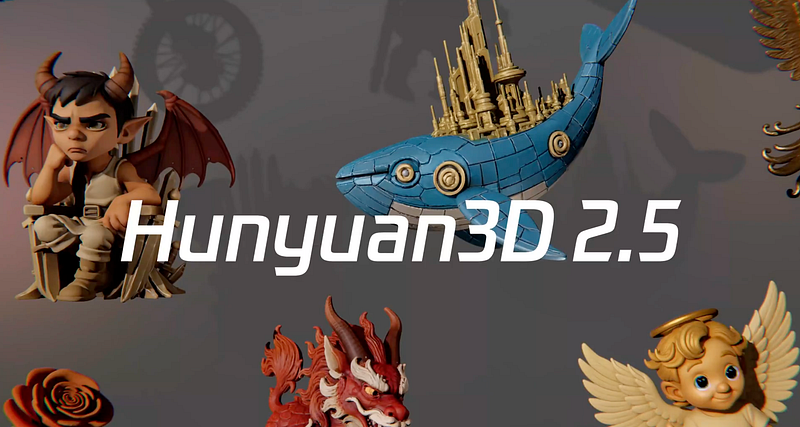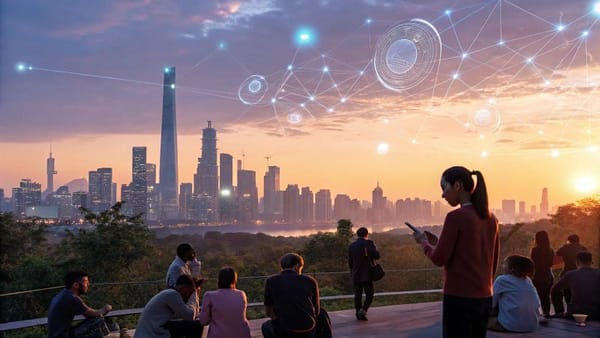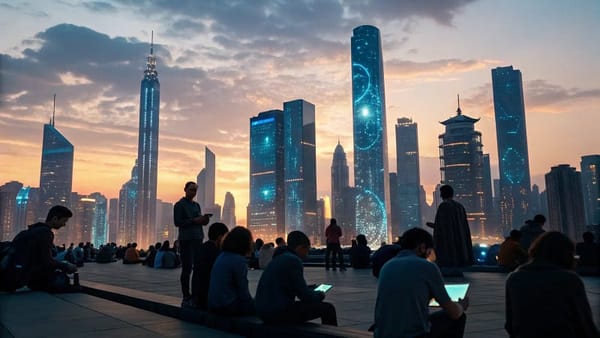The New King of AI 3D Model Generation — Exploring Hunyuan 3D 2.5
In the rapidly evolving world of AI Trends, one breakthrough that stands out is the ability to create detailed 3D models in seconds. Thanks…

In the rapidly evolving world of AI Trends, one breakthrough that stands out is the ability to create detailed 3D models in seconds. Thanks to Tencent’s innovative AI tool, Hunyuan 3D 2.5, we can now transform text, images, and even sketches into fully realized 3D assets with incredible ease and precision. This advancement is not only a game changer for developers and creators but also opens up limitless possibilities for anyone interested in 3D modeling and game development.
Let’s dive into how this powerful tool works, explore its unique features, and see how we built a functional 3D game using custom AI-generated models.
Table of Contents
- Revolutionizing 3D Model Creation: Image to 3D and Text to 3D
- Step-by-Step: Using Hunyuan 3D 2.5 to Create Your Own 3D Models
- Exploring Secret Features: Laboratory, Workflows, and Sketch to 3D
- Rapid-Fire Examples: Futuristic Animals, Vehicles, and Game Props
- Why This AI Tool is a Game-Changer for 3D Modeling
- Frequently Asked Questions (FAQ)
- Final Thoughts
Revolutionizing 3D Model Creation: Image to 3D and Text to 3D
One of the most impressive capabilities of Hunyuan 3D 2.5 is its ability to generate high-quality 3D models from simple inputs like photos or text prompts. For example, starting with a single photo of our character AI Dana, we generated a complete 3D version of her with adjustable textures. This model can then be downloaded and integrated into various projects, including games.
Alongside image-to-3D conversion, the tool also excels at text-to-3D generation. We created various 3D trees just by describing them in text, and the results were solid and visually appealing. These models were incorporated into a simple yet functional game called “Feed Dana Chocolate,” where our character collects chocolates while navigating a 3D environment filled with AI-generated trees and props.
Creating Dynamic Game Assets with AI
What makes this tool especially valuable is its versatility in generating multiple variations of assets from a single prompt. For instance, from one chocolate prompt, we received an array of different chocolate-themed 3D models, including a fun chocolate monster that could be used as a game mechanic — such as making Dana sick and changing her facial expression when collected.
Similarly, we explored different tree models and textures to add variety to the game environment, demonstrating how easily one can diversify game assets without manual modeling. We even generated AI Dana in a princess dress, complete with detailed shoes and textures, showcasing the tool’s ability to create character variations.
Moreover, the platform offers automatic bone binding, a feature that adds rigging to models before downloading. This is essential for developers working with game engines like Unity, allowing immediate use of animated 3D characters without additional rigging work.
Step-by-Step: Using Hunyuan 3D 2.5 to Create Your Own 3D Models
Getting started with this tool is straightforward. Within the creation tab, you can choose between two modes: text-to-3D or image-to-3D. For example, we used a simple text prompt, “a cloud that is smiling, cartoon style,” and triggered the AI to generate four 3D cloud models.
Once the models were generated, we reviewed the options, selecting the best cloud for our project. The models are downloadable in various file formats suitable for different uses, including formats optimized for Unity. After downloading, integrating the 3D asset into our game was made even easier thanks to AI-powered code generation tools like Vibe Code, which automatically updated the game’s code to include the new cloud models in the sky.
This seamless workflow highlights how the tool not only creates assets but also supports their implementation, reducing the technical barrier for developers and creators.
Exploring Secret Features: Laboratory, Workflows, and Sketch to 3D
Beyond basic model generation, the tool offers a “Laboratory” feature with fun presets such as 3D mini-game creation. We generated a video showing AI Dana jumping out of a portal, grabbing a sword, and acting as a game character — all from AI-generated 3D models. This demonstrates the tool’s potential for rapid prototyping and creative storytelling.
Workflows offer customizable templates to maintain a consistent aesthetic across your models, perfect for game developers seeking a unified visual style.
Another standout feature is Sketch to 3D, which converts simple sketches into detailed 3D objects. For instance, a penguin sketch was transformed into a charming 3D penguin model, and a complex castle sketch with stars and floating teddy bear heads was rendered into an impressive 3D scene. These models can be exported as GIFs, MP4s, or game-ready files, making them versatile for various creative projects.
Rapid-Fire Examples: Futuristic Animals, Vehicles, and Game Props
To showcase the breadth of possibilities, we explored numerous AI-generated models like a tech-inspired crab with intricate details and shine, futuristic vehicles with realistic sun glare, and animal characters outfitted with high-tech gear. These examples underline how this tool can fuel creative game design with unique custom assets that stand out.
Whether you need a new character, a game prop, or environmental elements, this AI-powered 3D generation tool dramatically accelerates asset creation, which has traditionally been a bottleneck in game development.
Why This AI Tool is a Game-Changer for 3D Modeling
Custom 3D models have long been a challenge for developers and creators due to the time and skill required. With Tencent’s Hunyuan 3D 2.5, the process is not only faster but also accessible to users without extensive modeling experience. The combination of text, image, and sketch inputs, automatic rigging, and integration support makes it a comprehensive solution for modern 3D asset creation.
This tool is completely free to use, making it accessible for indie developers, hobbyists, and professionals alike. It’s a shining example of how AI Trends are shaping the future of creative technology, empowering us to bring our ideas to life quickly and efficiently.
Frequently Asked Questions (FAQ)
What types of inputs can Hunyuan 3D 2.5 use to create 3D models?
It supports text prompts, images, and sketches as inputs to generate detailed 3D models.
Can I use the generated models directly in game engines like Unity?
Yes, the tool offers automatic bone binding (rigging), and models can be downloaded in Unity-compatible formats for immediate use.
How long does it take to generate a 3D model?
Depending on the complexity, generation typically takes between 5 to 10 minutes.
Is this AI tool free to use?
Yes, based on available information, it is completely free to use.
Can I customize textures and appearances on the generated models?
Absolutely. You can adjust textures and preview different looks before downloading.
What is Sketch to 3D, and how does it work?
Sketch to 3D converts your hand-drawn or digital sketches into fully rendered 3D models, which can be exported as images, videos, or 3D files.
Final Thoughts
As AI Trends continue to evolve, tools like Tencent’s Hunyuan 3D 2.5 are transforming the creative landscape by making 3D modeling faster, easier, and more accessible than ever. Whether you’re a game developer, digital artist, or content creator, this technology empowers you to bring your imagination into the 3D world with minimal effort.
We encourage you to explore this tool and see how it can enhance your workflows. With its free availability and powerful features, it’s poised to become an essential part of the AI-driven creative toolkit.
This article is based on comprehensive research derived in part from the referenced video The New KING of AI 3D Model Generation — Hunyuan 3D 2.5




